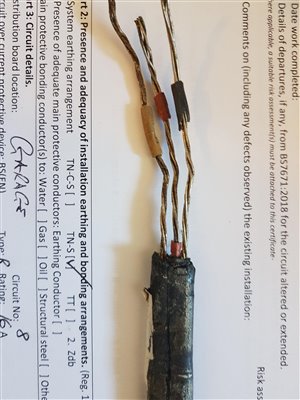Oh the bane of IR testing on EICRs
Now its just impracticle to disconnect all loads to carry out IR testing, I think everyone can agree on that. And that Phase and Neutral are connected then tested to earth.
This is what I do, and then test @250V as to avoid damaging any equipment in the installation. And unless the IR value was <.5 Meg, would not bother me. What BS7671 states, but BS7671 is maybe somewhat unclear in that if that voltage (250V) was used then .5meg value should used, but that value should only be used on SELV, and PELV. Now experience also tells me that even if you had a return 0.0, and then did Kohms by using the ohms setting, even values of 100Kohms are fine. (Actually can be much lower than this) and we are pretty clear that its not the cable reurning these values.
So question is when doing an EICR @ 250V, at what point would you recommend an FI? For me the value would have to be <.5Meg


